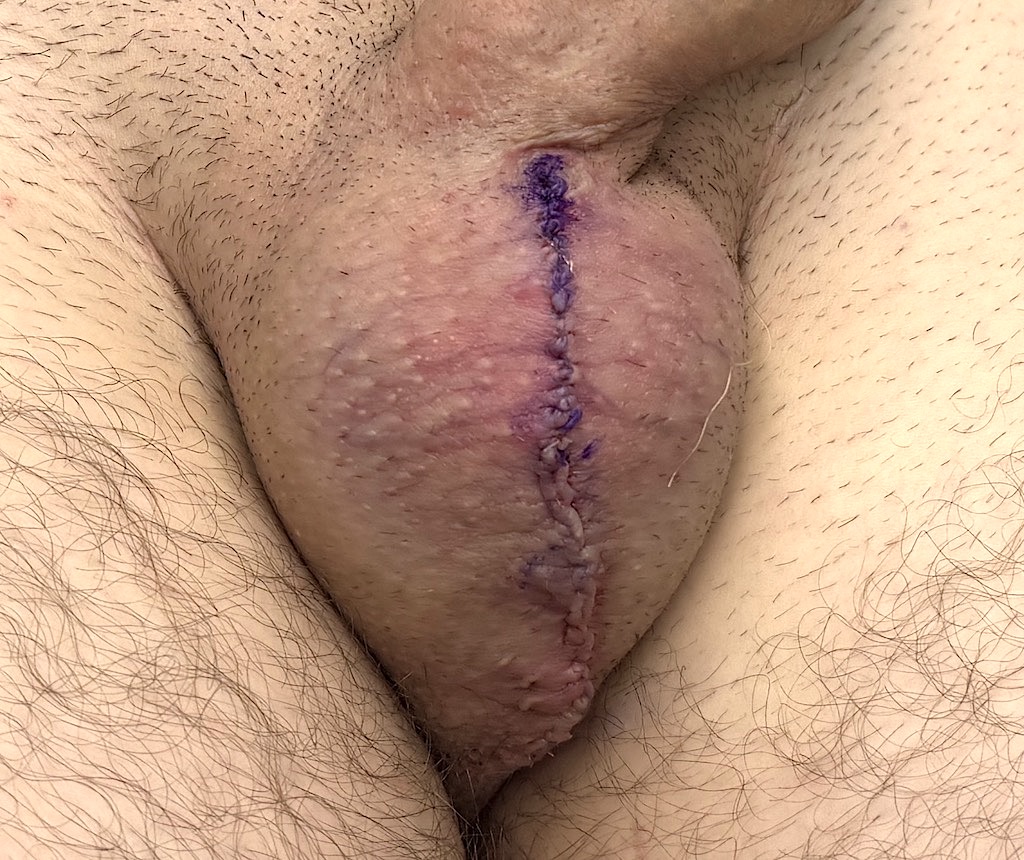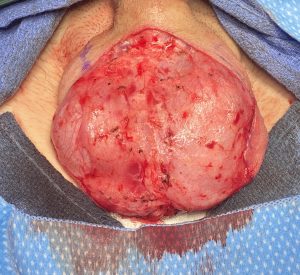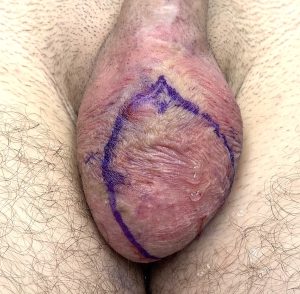Background: Tightening and lifting of the low hanging scrotum is done by a skin excisional procedure. This usually has a vertical orientation ending up with midline closure that lies along the natural raphe line. This results in the best scar outcome as well as maximizes the amount of size reduction/lift. It is also possible that the direction of the excision is horizontal in orientation. But this produces a more limited lifting effect and places the scar perpendicular to the relaxed skin line of the scrotum which increases scar width.
In vertical excision scrotoplasty the limits of its length are the base of the penis anteriorly and the perineum posteriorly. It is usually best to not initially excise right up to these ‘ends’ as, based on the width of the elliptical cut out, there is almost always the needs to work oun dogear excesses. So there is a need for some extra room to work and to keep scarring away from the penile-scrotal junction and the very different skin of the perineum.
The limits of the amount of scrotal reduction is based on an estimate of the sides of the scrotum coming together without undue tension. This is done by a ‘middle pinch’ test where the initial marks can seem excessive. Thus it is always best to make the incisions just inside them to ensure a secure closure that will not dehisce postoperatively.
While usually the initial scrotal reduction is sufficient, some patients may desire an even greater scrotal reduction/lift. Can a secondary scrotal reduction be successfully done?
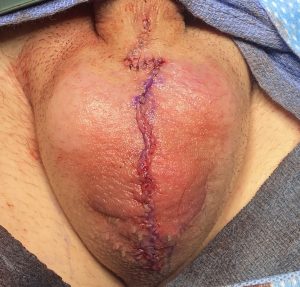
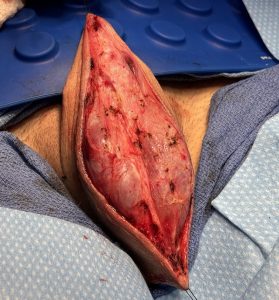
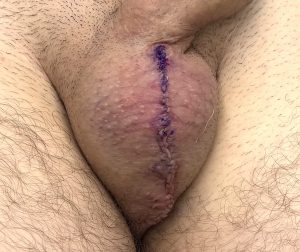
The scrotal skin is naturally elastic so it is no surprise that some relaxation occurs after a primary excision. As a result a secondary successful scrotoplasty is possible albeit with a reduced amount of skin removal and resultant lifting effect. There is an increased risk of wound dehiscence with a second scrotal reduction so it pays to not be as aggressive with the resection the 2nd time.
Key Points:
1) Scrotal reduction is typically done using a vertically oriented skin excision pattern.
2) The procedure removes as much skin as possible that will permit a not overly tight closure.
3) More scrotal skin can always be removed secondarily if more scrotal reduction/lift is desired.
Dr. Barry Eppley
World-Renowned Plastic Surgeon

